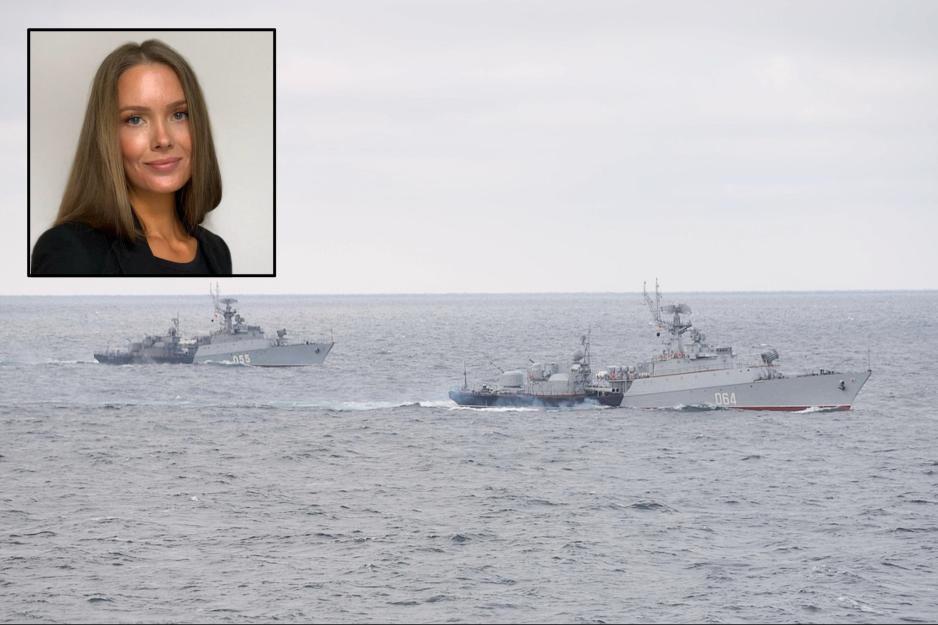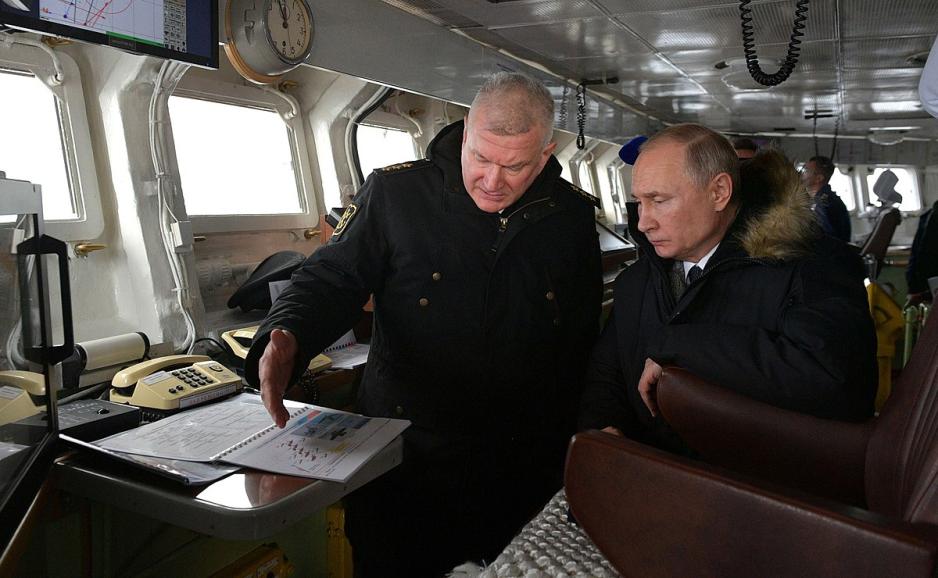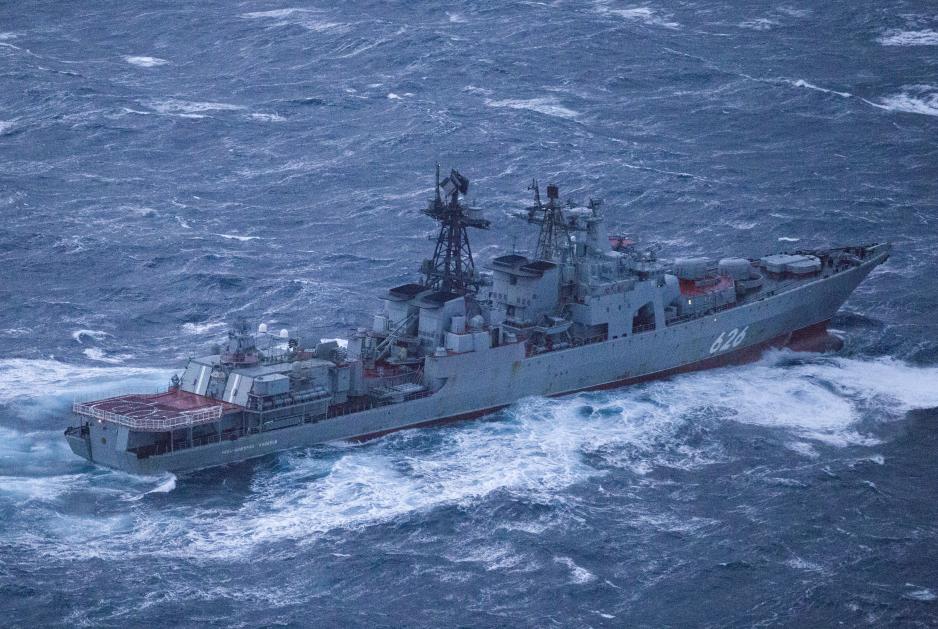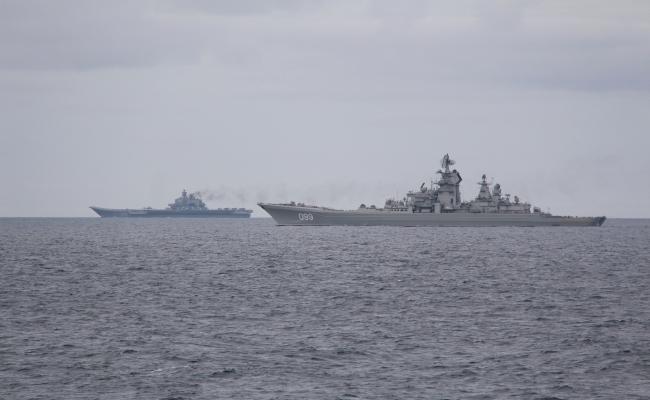“Extensive Russian Marine Exercises May Reveal Moscow’s Thinking”

“The most interesting thing about the exercises are the opportunities for insight into Russian calculations of the future trajectory of the Ukraine conflict”, says Researcher Ina Holst-Pedersen Kvam at the Royal Norwegian Naval Academy. (Photos: www.kremlin.ru/Wikimedia Commons, and the RNNA)
The Russian Northern Fleet participates in a larger Russian navy exercise taking place both in the Barents Sea and the world’s oceans. “The fleet’s exercises open up for rare insights into Russian calculations of the future trajectory of the Ukraine conflict” argues Researcher Ina Holst-Pedersen Kvam at the Royal Norwegian Naval Academy.
In January and February, Russia holds a series of navy exercises in all the responsibility areas of the Russian navy, according to a press release from the Russian Ministry of Defense.
The exercises will take place in the High North, in the Northeast Atlantic the Mediterranean, the Pacific, and in the northern Okhotsk Sea in East Siberia.
This exercise activity takes place at the same time as tension between Russia and the West regarding the Ukraine conflict, and the deploying of some 100,000 Russian soldiers near the Ukrainian border.
All the four Russian navy fleets – the North Fleet, the Baltic Sea Fleet, the Black Sea Fleet, and the Pacific Fleet – participate in the exercises. It all takes place under the auspices of the Russian Navy’s Chief Commander, Admiral Nikolay Yevmenov.
Last Tuesday, war ships from the Northern Fleet was escorted south along the Norwegian cost by a Norwegian maritime surveillance plane, according to the Norwegian Armed Forces. The group of five Russian vessels was discovered when the P-3C Orion plane, based on Andøya Island, was on a routine patrol tour.
Insight into Russian considerations
“The most interesting part of the Northern Fleet’s exercises now is the opportunity they provide for rather critical and revealing insights into Russian calculations of the most likely future trajectory of the Ukraine conflict”, says Researcher Ina Holst-Pedersen Kvam at the Royal Norwegian Naval Academy to High North News.
“Such windows of opportunity have been largely missing so far. This has made the opportunities for both predicting Russian moves with reasonable security, and also for deducting Moscow’s view on what calculations these moves rest on when it comes to risk and potential benefit, more complicated.”
The Russian Defense Ministry has also announced that forces from the Northern Fleet, the Baltic Sea Fleet, and the Pacific Fleet shall practise inter-fleet grouping in the Mediterranean. Several of the forces now participating in the exercises will therefore sail towards the Mediterranean afterwards, the announcement says.
Protective roles
“A larger force formation consisting of sea-going landing vessels is already heading for warmer waters. Half of these landing vessels belong to the Northern Fleet, as we well know. They all appear to be heavily loaded with personnel, equipment, or weapon systems. Probably a combination with the potential of establish a risk of attack also along other flanks against Ukraine”, the researcher says.
“In that connection, monitoring what forces that actually remain in our areas will therefore be potentially at least as crucial”, Kvam points out.
She is particularly observant about whether remaining forces in the north may assume their traditional protection roles towards the strategic submarines equipped with nuclear weapons if these do not return to port after the exercises.
“It is a fact that in a potential conflict, these will operate from so-called bastions underneath the Arctic Ocean ice, with nuclear attack submarines and other forces as ‘gatekeepers’ to secure the operational freedom of these submarines”, Kvam says.
“Any such positioning in the North will thus constitute a significant punch to the negotiations currently going on in the south. Potential nuclear threats and demonstrations will in that way aim to add more force to Russian demands”, the researcher argues.

Chief in Command of the Russian Fleet, Admiral Nikolay Yevmenov, and Russia’s President Vladimir Putin at a joint exercise for the Northern and the Black Sea Fleets in 2020. (Photo: Kremlin.ru)
Increased focus on large-scale conflict
The Northern Fleet’s operation exercises in the north will be limited to the waters this fleet usually operates in, in accordance with the announced exercise areas, the researcher says.
In other words; the western parts of the Barents Sea off the Fisher Peninsula, as well as eastern parts along the coast of Novaya Semlya.
The fact that this kind of strategic command and control exercises kick off the Northern Fleet’s training soon after the Orthodox New Year celebrations is not unusual, according to Kvam.
“The fact that these moves now take place simultaneously with similar activity in other military districts also follows an emerging trend in Russian military planning in general, with increasing emphasis on preparations for a large-scale conflict in which the entire Russian defense is expected to contribute in a total war effort”, she says.
More than 140 warships
Following on from that, the researcher is not very surprised that Russia appears to utilize the accumulated potential of the exercises for signaling and deterrence in the increased tension around Ukraine and increased meeting activity between in particular Moscow and Washington.
The purpose appears to have been to create fear of war based on what the Russian refers to as scalable and demonstrative “threat” and “force”
In total, the Russian marine exercises will on a global scale involve more than 140 warships and support vessels, more than 60 plans, 1,000 units with military equipment and some 10,000 military personnel, the Defense Ministry says.
“Based on what we know about the Northern Fleet’s exercises and its content and direction per today, with its apparent main focus on anti-aircraft defense and anti-submarine operations, the general exercise scenario is here fairly normal compared to everyday practice. In the Northern Fleet’s plan work for a potential conflict with the USA in particular such a threat situation is exactly what dominates. An incoming missile attack from advance warships and planes in the area, combined with attacking submarines, is what is expected and will threaten these bastions”, she says.
The use of such forces in the North may therefore also allude to the extent to which Putin and his circle actually have been convinced that a worst-case scenario of potential new advances towards the Ukraine will limit itself to a new round of a more extensive sanction regime rather than primary American military measures. Which was stressed once again by US President Joe Biden recently”, Kvam says.
Create fear of war
While several aspects of the Northern Fleet’s exercise operation sin the North this year follow a rather normal pattern and provide little reason to wonder, the researcher also notices the outline of something new:
“In my view, what we really see the outline of now is the Northern Fleet’s function and role in the overall Russian regime for conflict management”, Kvam argues and continues:
“The purpose appears to be to create fear of war based on what the Russian themselves refer to as scalable and demonstrative “threat” and “deterrence”. Taken to extremes, this will happen through sable-rattling with nuclear forces, which can now use and exploit an overall western confusion about western intentions, preferred trajectories, and escalation opportunities.”
The Northern Fleet, which is the largest Russian marine fleet, is home to most of Russia’s strategic submarines holding nuclear weapons. These submarines form the Russian second-strike capacity in case of a nuclear attack and have bases at the Kola Peninsula and by the White Sea in Northwestern Russia.

A Russian chase vessel of the Udaloy class sails from the north off the Norwegian coast on 25 January. (Photo: P-3 Orion/Norwegian Armed Forces)
Negotiation card
“There is an overarching insecurity regarding the thresholds for Russia’s potential use of nuclear weapons in a worst-case scenario, even in a limited extent. With this backdrop, the idea from Moscow is probably that its positioning meanwhile may increase the likelihood of western admissions in the ongoing negotiations”, she assesses.
“The Russian bombers’ raid to Franz Joseph Land last week, on the day before the meeting between US Secretary of State Anthony Blinken and Russia’s Foreign Minister Sergey Lavrov, and in the aftermath of British and American weapon supplies to the Ukraine, was similarly as expected, and quite in keeping with this escalation ladder”, the researcher says and expands:
“Every step with its content, mix and purpose is tailor-made to increase the efficiency of the next step if an escalation were to become necessary. Even though in my view it would thus be far easier than before to predict Russian moves, and therefore also meet them on our side with a higher chance of success, it nevertheless gives little reason for general optimism, when the Kremlin now demonstrates an apparent staunch capacity and will to follow up threats with actions”, Ina Holst-Pedersen Kvam at the Royal Norwegian Naval Academy says in closing.
Protests
On Monday this week, Ireland protested against marine exercises Russia has announced that will take place 240 kilometers off the Irish coast, according to BBC.
“Russia’s exercises are not welcome”, said Defense Minister Simon Coveney before going to an EU meeting about the Ukraine crisis.
Ireland is militarily neutral. Russian exercise activity will take place legal in international waters, waters also overlapping with the Irish exclusive economic zone, as well as with Irish airspace.
Also read
This article was originally pubished in Norwegian and has been translated by HNN's Elisabeth Bergquist.




